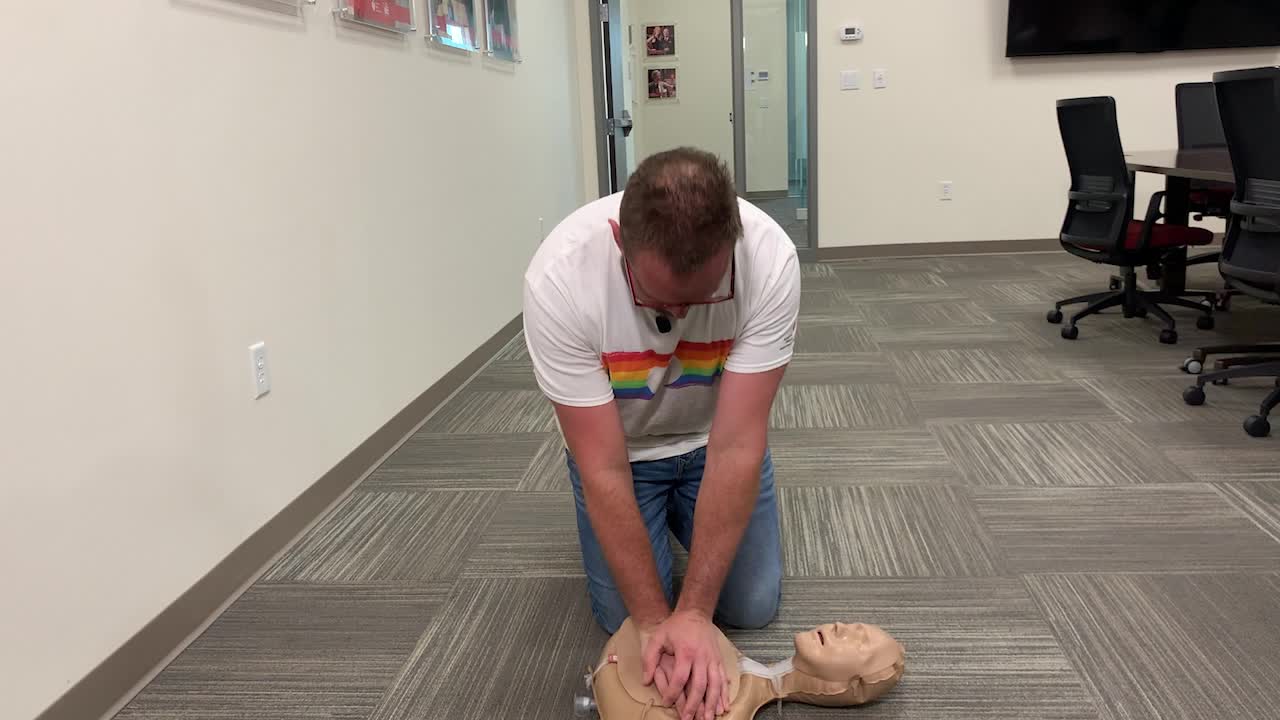New campaign shines light on opioid epidemic, how CPR can save lives
[anvplayer video=”5113217″ station=”998122″]
A new campaign from the American Heart Association (AHA) aims to slow down a deadly epidemic.
The launch of this push falls on CPR & AED Awareness Week, from June 1 – 7. The goal is for more people to learn and get familiar with the lifesaving act while focusing on helping someone experiencing an opioid overdose.
The AHA says to expect to hear and see about this campaign with advertisements. A video was also released showing what to do in light of someone having an overdose.
“It can be the difference between life and death,” Justin Bell with the AHA, said, adding, “when someone drop [and] they’re not breathing normal, and they’re unconscious, or their heart stops breathing, they’re dying in front of you.”
When asked if he thinks this campaign will help save lives, Bell’s response was simple: absolutely.

(KSTP)
Numbers from the Minnesota Department of Health’s (MDH) opioid dashboard highlight the need for this attention. According to MDH, in 2000, 54 people died from an opioid overdose. In 2020, 678 people died — and that number is up from 427 the year before.
Police officers have now been trained to be first responders because it’s escalated so severely.
“It’s becoming far worse than even the word ‘crisis,'” said Captain Dale Hager, with the White Bear Lake Police Department.
Hager says while performing CPR on someone experiencing an overdose, it’s important to remember to do the ‘rescue breaths’ – sometimes known by people as mouth to mouth.
The reason for that, Hager says, is because many times, those experiencing an opioid overdose are part of a younger generation, and their heart is not the worry — the concern is with the lack of oxygen they’re getting.
“They need breath,” Hager said.
MDH’s numbers highlight a larger concern, specifically with these deaths being disproportionate.
According to MDH, “In Minnesota, American Indians are seven times as likely to die from a drug overdose as whites, and African Americans are twice as likely to die from a drug overdose as whites.”
Before this campaign, work to curb these numbers was well underway at the Indigenous Peoples Task Force (IPTF).
“It’s been an explosion,” Sharon Day, executive director with the IPTF, said about the last few years of opioid use in the community.
“Here at the Task Force, we begin with primary prevention,” Day added about some of their work.
Day’s work and career have always been personal as she’s 47 years sober. But recently, it became much more personal. Her 28-year-old grandson died of an overdose in November.
“Did I ever think one of my grandchildren would be one of those statistics […] never,” Day told 5 EYEWITNESS NEWS somberly.
Day welcomes the AHA’s campaign as it brings more light to the issue.